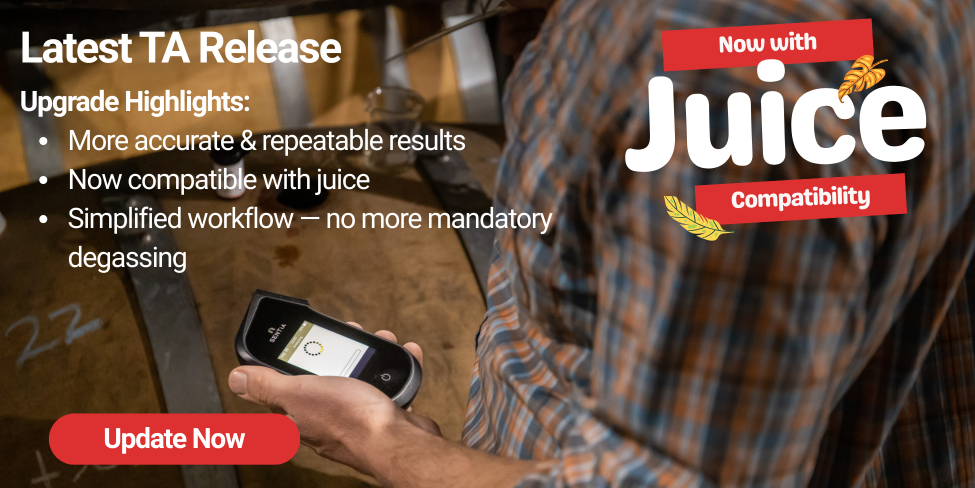
Subject: New Sentia TA Algorithm – Software Update Release Notification
We’re pleased to inform you of an important update to the Sentia Titratable Acidity (TA) Test, which will be included in the next software release: version 2.3.1.555.
Key Updates and Enhancements:
1. Mandatory Dilution Step Introduced
To improve accuracy and repeatability, the new TA algorithm now requires a dilution step — following the same procedure as the Acetic Acid test.
➡️ Mix 1 part wine/juice (100 µL) with 3 parts distilled or deionized water (300 µL).
2. Degas Step Now Optional
Degassing is no longer mandatory. It is now recommended only if the sample shows visible effervescence or is known to contain very high levels of dissolved CO₂.
3. Algorithm Upgrade for More Reliable Results
The previous machine-learning algorithm has been replaced with an electrochemical algorithm that uses known calibration curves, mathematical formulas, and signal processing rules. This change enhances accuracy and consistency across a wider range of wine and juice samples — even under variable conditions.
4. Software Update Required to Run the TA Test
Customers must update to this new software to continue using the TA test.
➡️ Previous versions will no longer be supported and attempts to run the test on outdated software will trigger a “30-05 Calibration Data Not Found” error.
5. Existing Test Strips Remain Compatible
There is no need to replace current TA strip inventory — all existing stock in the field is fully compatible with the new algorithm and software version.
6. Expanded Sample Compatibility
The updated TA test is now validated for both wine and juice, expanding its utility and improving decision-making earlier in the winemaking process.
Why Introduce a Dilution Step?
We recognize that this step adds a small change to the workflow, but it has been carefully designed to reduce variability and improve accuracy across most wine varietals.
Why it’s beneficial:
The dilution brings the sample’s pH levels to a consistent level regardless of the original wine pH. This helps ensure more stable chemical reactions and reproducible results. This translates to higher confidence in your readings — across all wine styles and vintages.
Bonus benefit:
The same step unlocks reliable testing for juice, supporting winemakers at earlier stages of production with meaningful, actionable data.
It’s a simple adjustment that delivers a big leap forward in performance and flexibility.


Figure: Correlation data for red wine samples (n=25): Sentia vs. Metrohm Autotitrator – comparing diluted samples (orange) with undiluted samples (blue).
We trust this information will help you confidently guide your customers through the transition. If you have any questions or require additional support materials, please don’t hesitate to reach out.